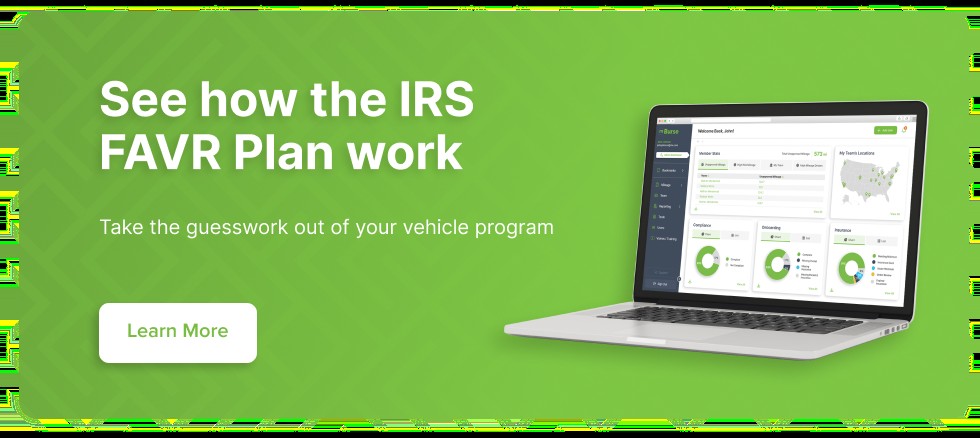When it comes to employee compensation, car allowances can be a valuable benefit. However, a common question arises for both employees and employers: Is A Car Allowance Taxed As Income? The answer, according to the IRS, is often yes. This is because the majority of car allowance plans are structured in a way that the IRS considers them “non-accountable,” meaning they are treated as taxable income, not as reimbursements.
While most car allowances fall under this taxable category, it’s important to understand that there are ways to structure these plans to be non-taxable. Companies that implement what’s known as an “accountable car allowance policy” can offer this benefit without the burden of income tax. These accountable plans require more detailed administration, including mileage tracking and expense reporting, but they can lead to significant tax savings for both the company and the employee. Let’s delve into the IRS guidelines to clarify the differences between these two types of plans.
Accountable vs. Non-Accountable Car Allowance Plans: What’s the Difference?
The IRS distinguishes between two types of car allowance plans: non-accountable and accountable. The classification hinges on whether the plan adheres to specific IRS guidelines designed to ensure that payments genuinely reimburse business-related vehicle expenses.
Non-accountable plans are those that don’t meet the IRS’s strict criteria for tax-free reimbursement. These plans typically lack the necessary procedures to verify that the allowance is actually being used for business vehicle expenses. A standard monthly car allowance, given without requiring expense substantiation, is a prime example of a non-accountable plan. Consequently, the IRS treats these payments as taxable income, no different from regular salary or wages.
On the other hand, accountable plans are carefully structured to comply with IRS guidelines. These policies incorporate methods to substantiate the business use of the funds, effectively classifying the payment as a vehicle reimbursement rather than just additional compensation. Examples of accountable plans include Fixed and Variable Rate (FAVR) allowances, mileage reimbursement at the IRS business rate, and mileage allowances that require substantiation. These plans, when properly administered, can provide car allowances without the burden of income tax.
Why is a Standard Car Allowance Typically Taxable?
The core reason a standard car allowance is considered taxable is its failure to substantiate business use to the IRS. Think of it this way: if an allowance is paid regardless of whether an employee actually drives for business, or without any requirement to prove business mileage, the IRS views it as simply extra pay.
In contrast, a mileage reimbursement can remain non-taxable, but only if it stays at or below the IRS business mileage rate. This rate, updated annually each December by the federal government, is designed to reflect the average costs of operating a vehicle for business. It serves as a benchmark for what the IRS considers a reasonable reimbursement. Without detailed tracking and reporting of business mileage, it’s impossible to demonstrate that a car allowance aligns with or falls within the IRS’s standard business mileage rate.
Many companies opt for the simplicity of a standard monthly car allowance because it eliminates the need for detailed record-keeping, is easy for employees to understand, and is straightforward to administer. However, this convenience comes at the cost of tax inefficiency, leading to unnecessary tax liabilities for both the company and its employees.
How Car Allowances are Taxed: Understanding the Impact
Because a standard car allowance is classified as a non-accountable plan, it is subject to the same taxes as regular wages. This means it should be taxed as W-2 income. Employers are obligated to withhold federal income taxes, FICA taxes (Social Security and Medicare), and state income taxes on the entire car allowance amount. The car allowance is effectively taxed at the employee’s marginal income tax bracket.
This taxation has several significant downsides:
- Reduced Reimbursement Value: A substantial portion of the money intended for business vehicle expenses is lost to tax withholding. This can often amount to 30-40% of the allowance, significantly diminishing its intended value.
- Potential Expense Coverage Shortfall: Due to taxes, the remaining allowance amount may not be sufficient to fully cover the actual costs of vehicle operation, leaving employees to bear some of the business expenses out-of-pocket.
- Employer Tax Burden: Companies also face taxes on car allowances through unemployment and FICA contributions, adding to the overall cost of this compensation method.
If a car allowance, after taxes, doesn’t adequately cover vehicle expenses, employees might be discouraged from driving for business or may seek employment elsewhere, potentially increasing employee turnover. Furthermore, if an employer fails to properly withhold and remit taxes on car allowances, they could face penalties and scrutiny during an IRS audit.
 FAVR how it works
FAVR how it works
Image: Diagram illustrating how a Fixed and Variable Rate (FAVR) car allowance program functions, showing the components of fixed costs like insurance and depreciation and variable costs like fuel and maintenance, and how these are combined for employee reimbursement.
Can You Deduct Business Mileage with a Car Allowance? The Deduction Dilemma
In the past, prior to 2018, employees receiving car allowances had the option to deduct business mileage as an unreimbursed business expense on their tax returns. This was a way to partially offset the tax burden on the allowance.
However, the Tax Cuts and Jobs Act of 2017 brought significant changes. For tax years spanning 2018-2025, employees are no longer permitted to claim mileage deductions to offset a taxable car allowance. This act eliminated miscellaneous itemized deductions for these years, including the unreimbursed business expense deduction for employees.
This change in tax law, coupled with the rapid rise in vehicle operating costs due to inflation, has put pressure on employers to re-evaluate their car allowance strategies. Many are now considering increasing allowance amounts or transitioning to IRS-accountable plans to provide fairer and more tax-efficient vehicle benefits. Adding further complexity, some states have expense indemnification labor codes that mandate full reimbursement of business expenses, potentially creating legal issues for employers who fail to adequately cover employees’ vehicle costs.
What Makes a Car Reimbursement Non-Taxable? The Key to Tax Savings
The fundamental principle behind a non-taxable, or IRS-accountable, car reimbursement plan is that it demonstrably proves that all funds paid out are solely for the reimbursement of legitimate business-related vehicle expenses. When structured this way, the payment is considered a reimbursement of an expense, not simply additional compensation, and therefore is not subject to income taxes or withholdings.
IRS Guidelines for Accountable (Non-Taxable) Vehicle Plans: Three Essential Rules
To qualify as an accountable plan and achieve non-taxable reimbursements, a car allowance policy must meet all three of the following IRS requirements:
-
Business Connection: The reimbursement must be directly linked to business expenses. The payments must cover expenses that would be deductible business expenses for the employer. This means the expenses must be incurred while performing services as an employee and be necessary for the business.
-
Substantiation: Employees must provide adequate documentation to support the expenses they are claiming. This substantiation should include a record or log detailing the time, business use, amount of the expense, and the business purpose for each trip. These records should be kept contemporaneously, meaning they should be recorded at or near the time the expense is incurred.
-
Return of Excess Reimbursements: Any amounts paid to an employee that exceed the substantiated business expenses must be returned to the employer within a reasonable time. The IRS Safe Harbor rules define “reasonable time” as requiring employees to substantiate expenses within 60 days of being paid or incurring the expenses, and to return any excess amounts within 120 days.
Are Mileage Reimbursements Taxable? A Common Accountable Plan
Mileage reimbursement at the IRS business rate is the most prevalent form of non-taxable vehicle reimbursement. For 2023, the IRS business mileage rate is $0.655 per mile. As long as a company reimburses employees at or below this rate, the mileage reimbursement is considered non-taxable because it meets the IRS criteria for an accountable plan.
Besides mileage reimbursement, two other common types of accountable plans are mileage allowances with substantiation and fixed and variable rate car allowances (FAVR).
Examples of IRS-Accountable Vehicle Allowance Plans: Exploring Your Options
IRS Mileage Rate: Simple but Potentially Inequitable
Reimbursing at the IRS mileage rate is widely accepted as a defensible method because the rate is set by the government and is easy to calculate. However, it’s important to remember that the IRS rate was initially designed as a tool for tax deductions, not necessarily for precise reimbursement. Using only the IRS rate can lead to situations where low-mileage drivers are under-reimbursed, while high-mileage drivers are over-reimbursed, as the rate doesn’t accurately reflect the actual costs incurred by individual drivers.
Mileage Allowance with Substantiation: A Hybrid Approach
A mileage allowance with substantiation combines a monthly car allowance payment with the requirement for employees to substantiate their business mileage. To avoid taxation, employers track business mileage, calculate the reimbursement amount based on the IRS rate, and compare it to the pre-set allowance. Employees are only taxed on any portion of the allowance that exceeds the substantiated mileage reimbursement amount. While this method can reduce tax liabilities, it can be administratively complex and may inadvertently limit employee business travel due to the mileage tracking requirement.
Fixed and Variable Rate Allowance (FAVR): The Most Accurate, Though Complex, Solution
Fixed and Variable Rate (FAVR) allowances represent an IRS-approved model for vehicle reimbursement designed for greater accuracy and fairness. A FAVR plan consists of two parts: a fixed payment to cover fixed vehicle expenses (like insurance, depreciation, and registration) and a variable rate per mile to cover variable expenses (such as gas, oil, and maintenance). Crucially, both the fixed payment and variable rate are tailored to the driver’s geographic location (garage zip code), enhancing the accuracy of the reimbursement by accounting for regional cost differences.
FAVR programs must adhere to a comprehensive set of 21 IRS tests concerning data, program structure, and driver eligibility to be considered “FAVR compliant.” For instance, the expense data used to calculate rates must be based on a standard vehicle, derived from a base locality, and be statistically sound.
While a FAVR vehicle program can deliver the most precise and equitable reimbursements, it is also the most challenging to set up and manage in-house. As a result, many organizations choose to outsource their FAVR vehicle program to specialized third-party administrators who have the expertise and systems to handle the complexities.
Choosing the Best Non-Taxable Vehicle Allowance for Your Organization
If your goal is to move away from a taxable car allowance, the simplest immediate step might seem to be switching to the IRS mileage rate. However, while easy to implement, this approach can create inequities among employees and potentially increase overall company expenses due to the rate structure.
The most effective long-term solution is to eliminate the tax waste associated with traditional taxable car allowances and reinvest those funds into a well-structured, IRS-accountable plan, particularly a Fixed and Variable Rate (FAVR) program administered by a third party. This vehicle reimbursement strategy not only protects employees’ income from unnecessary taxation but can also save the company money and reduce administrative burden.
To ensure tax-free reimbursements, remember that substantiating business use through an accountable plan is paramount. Simply shifting the burden of mileage substantiation to employees while continuing to pay a standard car allowance will not magically make it non-taxable.
For expert guidance on selecting and implementing the best accountable vehicle plan for your organization, it’s advisable to seek professional consultation. By transitioning to an accountable plan, companies can optimize their vehicle benefit programs, ensuring both tax compliance and employee satisfaction.
